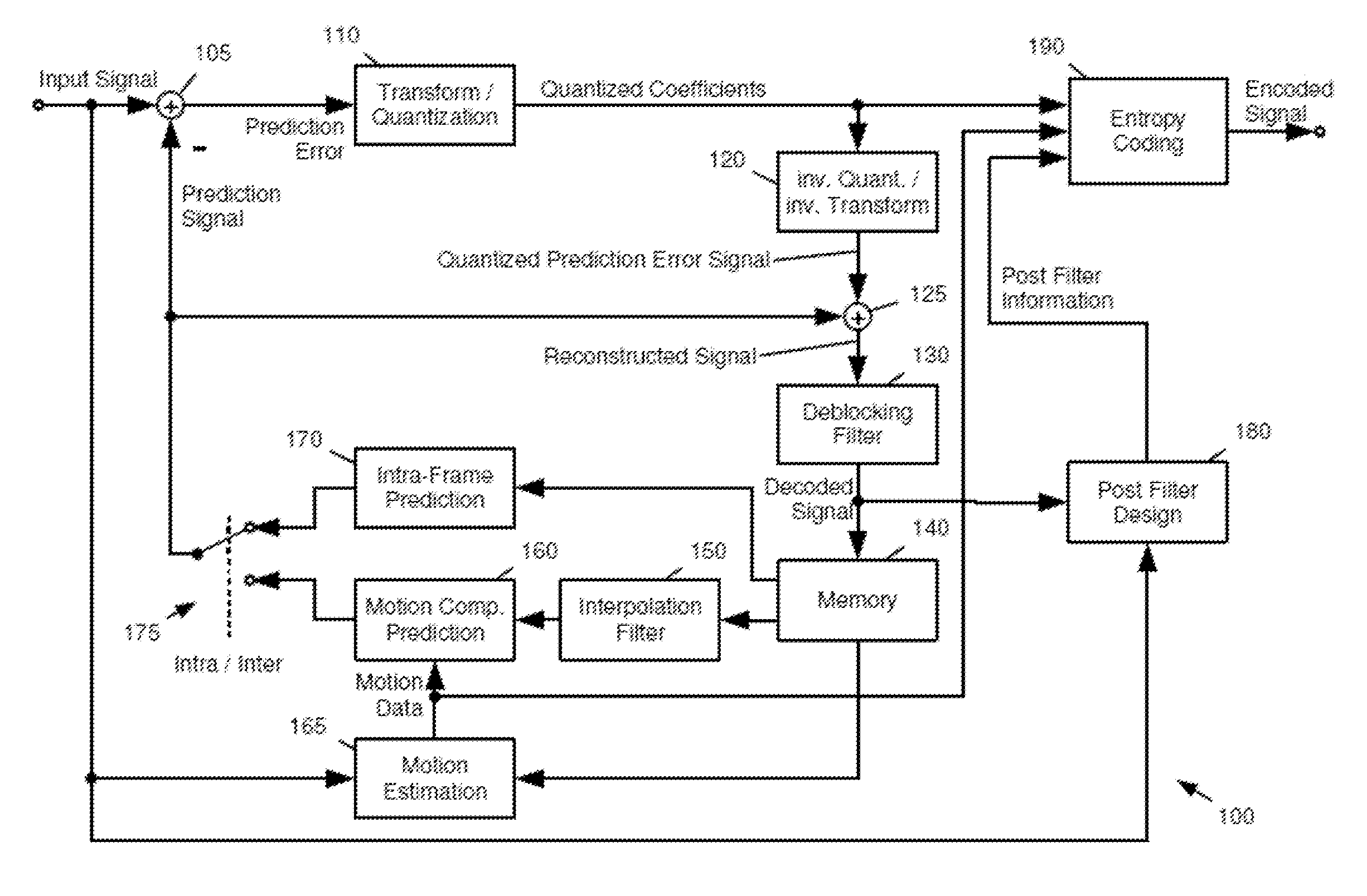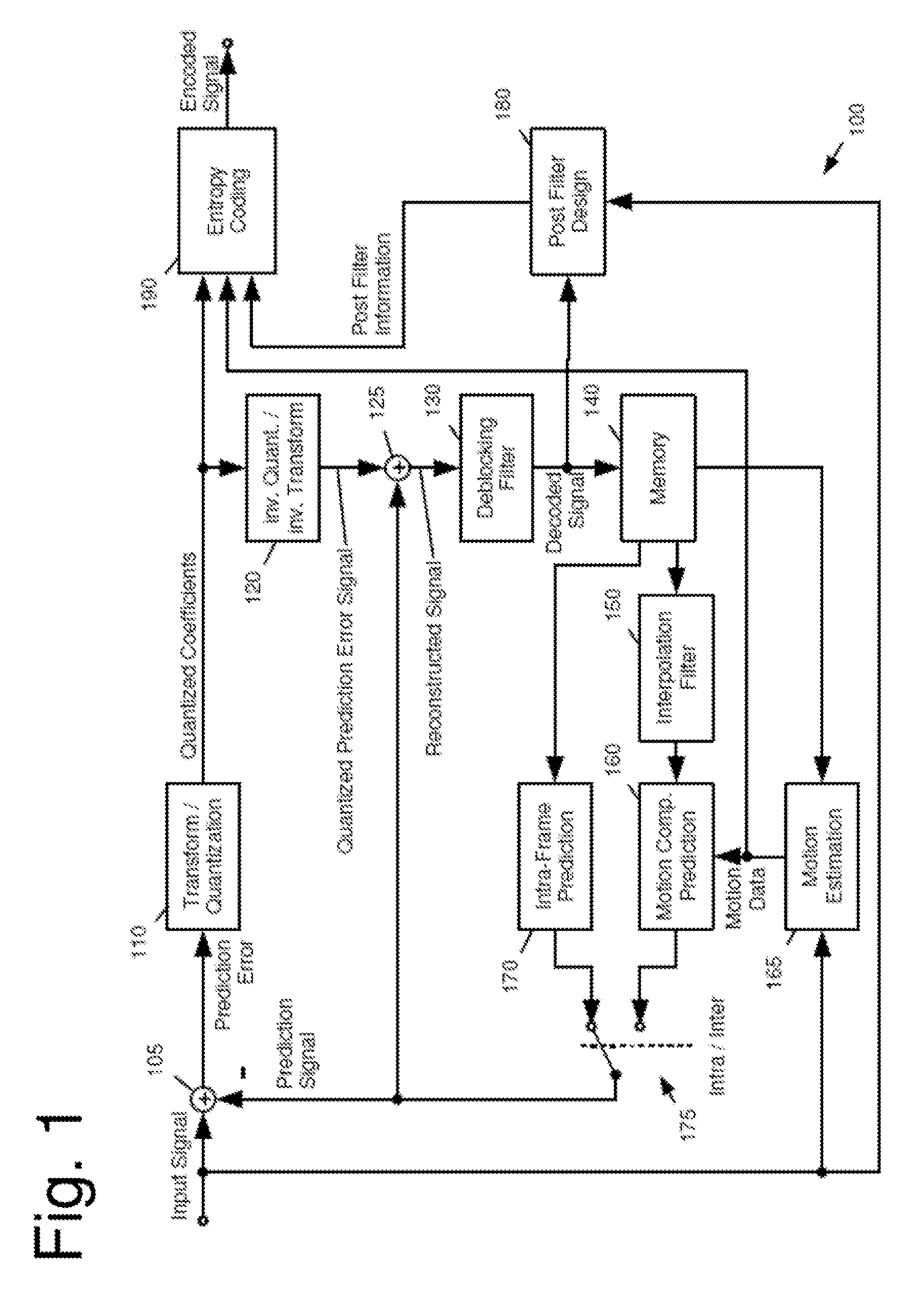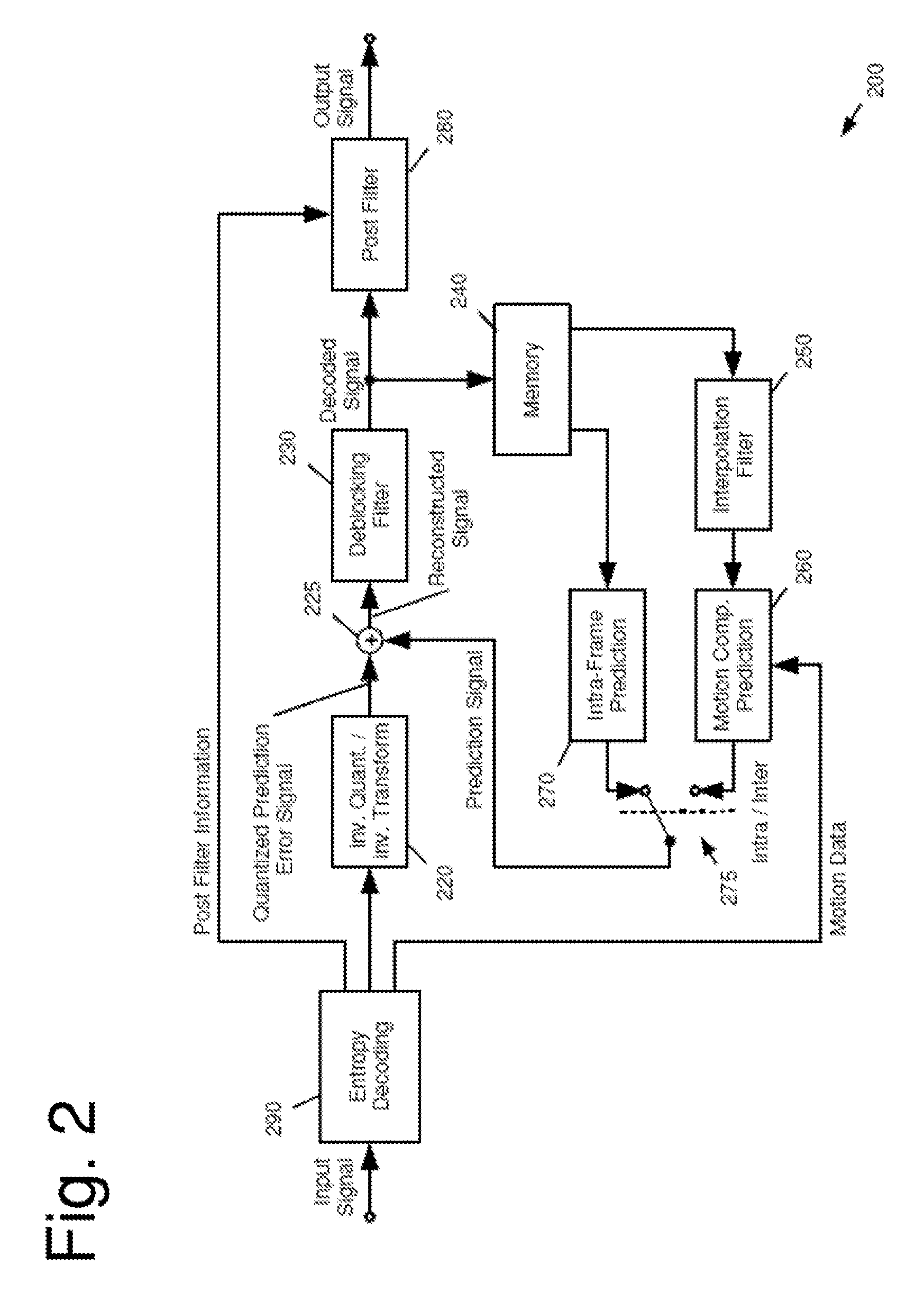Filter positioning and selection
a filter positioning and filter technology, applied in the field of filter positioning and selection, can solve problems such as multiplication noise, and achieve the effects of minimizing dissimilarity, maximizing similarity, and maximizing correlation
- Summary
- Abstract
- Description
- Claims
- Application Information
AI Technical Summary
Benefits of technology
Problems solved by technology
Method used
Image
Examples
Embodiment Construction
[0089]Image and video signals typically include noise. Such noise can have various statistics depending, for instance, on the source of the image or video signal. The statistics of the noise can vary. It varies typically with the time and may also vary with the spatial location. For instance, video signals acquired by film cameras typically contain additive camera noise, whereas video signals acquired by ultrasound sensors or synthetic aperture radar (SAR) sensors may contain multiplicative noise. Thus, the statistics of the noise in the signal to be coded can vary.
[0090]Moreover, the image and video coding typically includes a quantization. The quantization further disturbs the video signal by additional noise, called quantization noise. The statistics of the quantization noise varies with the kind of applied coding such as prediction error coding—such as none, spatial or temporal, wherein the kind of applied coding may usually vary from block to block.
[0091]In general, the input i...
PUM
 Login to View More
Login to View More Abstract
Description
Claims
Application Information
 Login to View More
Login to View More - R&D
- Intellectual Property
- Life Sciences
- Materials
- Tech Scout
- Unparalleled Data Quality
- Higher Quality Content
- 60% Fewer Hallucinations
Browse by: Latest US Patents, China's latest patents, Technical Efficacy Thesaurus, Application Domain, Technology Topic, Popular Technical Reports.
© 2025 PatSnap. All rights reserved.Legal|Privacy policy|Modern Slavery Act Transparency Statement|Sitemap|About US| Contact US: help@patsnap.com



